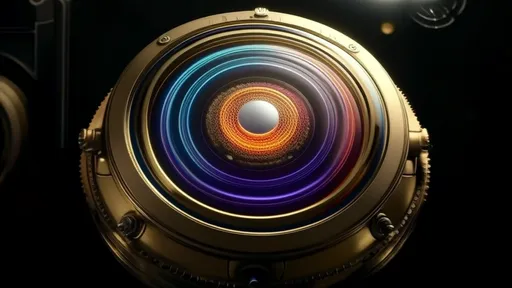The concept of property rights on Earth is well-established, but when it comes to celestial bodies like the Moon, the legal and ethical landscape becomes murky. The emergence of space art—sculptures, installations, or even digital creations placed on the lunar surface—has sparked a new debate: who owns art on the Moon? As nations and private entities race to leave their mark beyond Earth, the question of lunar artwork ownership challenges existing space treaties and demands fresh legal frameworks.
The Outer Space Treaty of 1967 forms the backbone of international space law, declaring that no nation can claim sovereignty over the Moon or other celestial bodies. However, the treaty remains silent on the issue of artistic or cultural property. This legal vacuum has led to conflicting interpretations. Some argue that any artwork placed on the Moon becomes part of the "common heritage of mankind," while others insist that creators or commissioning entities retain intellectual and physical ownership rights.
Recent lunar missions have brought this debate to the forefront. When private companies land art installations on the Moon, do they retain control over those works? If a nation-sponsored rover etches a design into the lunar regolith, does that design belong to the country that sent the rover? The absence of clear guidelines has created a Wild West scenario, where stakeholders operate on conflicting assumptions about ownership and preservation.
The role of intellectual property law in space art adds another layer of complexity. Copyright protections theoretically extend to works created or placed in space, but enforcement becomes impractical across jurisdictions. An artist who transmits a digital artwork to a lunar base may hold copyright, but preventing unauthorized reproductions or modifications on the Moon is nearly impossible. This raises questions about whether traditional IP frameworks can adapt to the realities of extraterrestrial creation.
Preservation concerns further complicate ownership debates. Unlike Earth, where cultural heritage sites receive legal protection, lunar artwork faces threats from subsequent missions, radiation, and micrometeorite impacts. Without recognized ownership structures, there's no clear authority to conserve or restore damaged works. Some space law experts propose an intergovernmental body to catalog and protect significant lunar art, but such proposals face political hurdles.
As commercial lunar activity accelerates, the need for clarity grows urgent. Future scenarios might include auctioned "art lots" on the Moon or corporate-sponsored lunar galleries. Without defined property rights, these ventures risk legal challenges that could stifle space-based cultural expression. The resolution may require amendments to existing space treaties or entirely new conventions specifically addressing extraterrestrial artistic and cultural property.
The conversation extends beyond legal technicalities to philosophical questions about art's purpose in space. If artwork on the Moon belongs to all humanity, does that collective ownership diminish an artist's control? Alternatively, if private entities claim exclusive rights to lunar art, does that violate the spirit of space exploration? These dilemmas underscore how human expansion into space is reshaping our most fundamental concepts of ownership and creativity.
Practical solutions might emerge from hybrid models blending terrestrial art law with space-specific provisions. Temporary ownership periods, shared conservation responsibilities, or blockchain-based provenance tracking could offer pathways forward. What remains certain is that as lunar art proliferates, Earth's legal systems must evolve to address creations that literally lie beyond their traditional jurisdiction.
The Moon's status as a blank canvas for human expression makes these questions inevitable. From nationalist symbols to avant-garde installations, lunar artwork represents both a continuation of human culture and a radical departure from terrestrial norms. Defining ownership isn't just about legal clarity—it's about determining how humanity's artistic legacy will be managed in the cosmic scale of time and space.

By /Jul 23, 2025

By /Jul 23, 2025

By /Jul 23, 2025

By /Jul 23, 2025

By /Jul 23, 2025

By /Jul 23, 2025

By /Jul 23, 2025

By /Jul 23, 2025

By /Jul 23, 2025

By /Jul 23, 2025

By /Jul 23, 2025

By /Jul 23, 2025

By /Jul 23, 2025

By /Jul 23, 2025

By /Jul 23, 2025

By /Jul 23, 2025

By /Jul 23, 2025

By /Jul 23, 2025